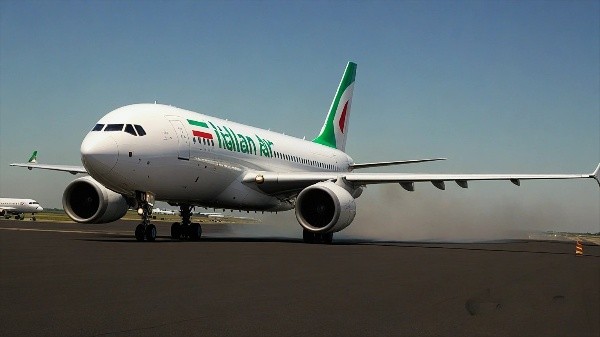Iran’s Plan to Strike Back Against the U.S.
Iran’s Military Preparations Following U.S. Attacks
Loading...

The interception was reportedly prompted by suspicions that the aircraft was carrying arms for Hezbollah
Incident Overview
In a significant military action, the Israeli Defense Forces (IDF) compelled an Iranian civilian airliner to reverse its course mid-flight, preventing it from entering Syrian airspace. This incident, which took place over the weekend, has raised alarms due to suspicions that the aircraft was transporting arms designated for Hezbollah, the militant group based in Lebanon.
Details of the Interception
Reports indicate that the confrontation occurred overnight from Saturday to Sunday, with multiple Israeli fighter jets intercepting the Mahan Air flight. Israeli media sources, including Ynet and The Times of Israel, detailed that the aircraft was threatened before it could land in Syria. Ynet even provided a flight path map showing the airliner’s journey from Tehran, passing through Iraqi airspace before its return, although The Times of Israel suggested that the map was not directly linked to this specific incident.
This recent interception mirrors earlier events, particularly a similar occurrence in early October when another Iranian flight, operated by Qeshm Fars Air, was forced to turn back after receiving warnings from the IDF in Iraqi airspace. Israel has consistently accused Iran of using civilian flights to transport weapons to Hezbollah, claiming that such operations are often disguised as commercial activities.
Ongoing Tensions in the Region
Israel's concerns extend beyond air traffic; the country asserts that Hezbollah regularly receives arms through land routes across Syria. Just last week, Israeli military operations targeted several alleged smuggling sites along the Lebanese-Syrian border, reflecting a broader strategy to disrupt the flow of weapons to Hezbollah. Israel's history of airstrikes in Syria is extensive, with operations aimed at thwarting Iranian military ambitions within the region.
For instance, in April, an Israeli strike targeted a facility within Tehran’s embassy compound in Damascus, resulting in the deaths of an Iranian general and several others. Israeli officials maintained that the site was a legitimate military target, dismissing claims that it was protected by international law.
Escalating Conflict with Hezbollah
The backdrop to this incident is the escalating conflict between Hezbollah and Israel, particularly following the outbreak of hostilities in October 2023. The IDF's military actions were largely a response to a deadly raid by Hamas into southern Israel, prompting a significant Israeli military campaign against both Hamas and its allies, including Hezbollah.
In September, Israel launched a series of airstrikes aimed at crippling Hezbollah's operational capabilities, targeting key leaders and members of the group. As tensions mounted, a ceasefire was brokered by the United States and France, which came into effect last Wednesday. However, reports indicate that this truce has been marred by over 50 violations, prompting private criticism of Israel from Paris regarding its commitment to the ceasefire.
Conclusion
Israeli Prime Minister Benjamin Netanyahu has articulated that one of the motivations for agreeing to the recent ceasefire with Hezbollah was to shift focus towards the perceived threat posed by Iran. The interception of the Iranian airliner underscores the complex and volatile nature of Middle Eastern geopolitics, where airspace control and military operations are closely intertwined with broader strategic objectives. As the situation evolves, the potential for further confrontations remains high, particularly in the context of ongoing regional tensions and military engagements.
Editor
Iran’s Military Preparations Following U.S. Attacks
Troops remain in five strategic locations, raising fears of renewed tensions and long-term occupation.
Opposition forces have taken control of the capital after a significant offensive. Here is how it unravelled.
